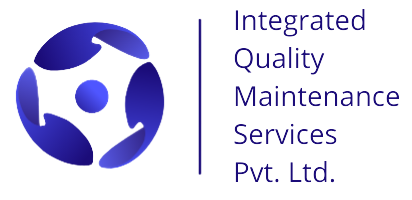

HYGIENE SERVICES
Industrial Hygiene
Industrial hygiene is the study to anticipate, recognize, evaluate, communicate and control & environment conditions persisting in workplace that may result in injury, illness, impairment, or affect the well being of personnel health.
The study identifies the hazardous agents such as; Biological, Chemical, Physical, Ergonomic and Psychosocial; in the workplace that could cause disease or discomfort.
It includes the following steps:
- Anticipating & Recognizing the possible health hazard in the work the area by Visiting the workplace, Interacting with employees about their health and safety, Examining the records (of accident, near-miss, sickness, etc).
- Evaluation of hazards by assessing the exposure and risk level for a definite time interval,
- Prevention and Control of hazards by developing and implementing the strategies to eliminate or reduce the hazards to an acceptable level.
HYGIENE SERVICES
Chemical Exposure Monitoring
Here, personal exposure monitoring of airborne contaminants like dust (respirable/inhalable/total), fibers (asbestos), welding fumes, Solvent vapors, aerosols etc. are carried out.
Exposure assessment is done by identifying all exposure sources, determining exposure duration, evaluating the effectiveness of the control provided and ultimately integrating these data to arrive at a conclusion on the extent of exposure.
The factors evaluated in exposure assessment are, the toxicity of the chemical, properties, and volume of the chemical used, duration of the exposure, individual tolerance of potentially exposed person, age and gender of the employee, the effectiveness of the exposure control measures provided, the use and effectiveness of personal protective equipment, general work practices such as rest periods, eating or smoking in the workroom, the presence of visible dust or fumes in the atmosphere.
Ergonomics Survey
The study is meant to eliminate discomfort and risk of injury/ill health due to working style.
The GOAL of an ergonomic assessment is to determine the level of ergonomic risk for the job you are evaluating.
In the ergonomics field, task analysis is a method to describe and analyze task performance when users interact with complex systems. This is the first step to do an ergonomic evaluation.
We use the following Ergonomic Risk Assessment Tools :
- Lifting/lowering: WISHA/NIOSH lifting calculator
- Pushing, pulling, and carrying: Snook tables
- Upper body posture: Rapid Upper Limb Assessment (RULA)
- Entire body posture: Rapid Entire Body Assessment (REBA)
- For vibration: Hand-Arm Vibration calculation
Illumination Survey
Illumination Survey is conducted to identify too much bright light, glare, low light or flickering light to avoid potential hazards and evaluation of risk to improve employee safety. The the purpose is to reduce the eye-related problems and providing better illumination at the workplace thereby increasing the efficiency of the employees during the work activities.
It evaluates the efficiency of the existing lighting fixtures installed in the workplace and compares it with the existing standards.
Lux meter is used for measuring Illumination levels. Lux is monitored at different locations with the help of lux meter and the result is compared with standards and providing appropriate recommendations for the areas where low lux is observed.
Industrial Hygiene Survey
Its aim is to examine industrial hygiene practices with a view to establishing their effectiveness in preventing occupational illness and their conformance with standards and regulations.
It’s a kind of Qualitative Exposure Assessment.
We conduct a walkthrough to:
- Understand the process and activities
- Identify the high-risk activities
- Understand the number of employees involved
- Identify similar exposure groups
- Review the chemicals their MSDS
- Understand the existing control measures in place
- Providing the Recommendations, if existing measures are not adequate
The qualitative assessment helps the Industrial Hygienist to arrive at risk rating for each activity and prepare a quantitative exposure assessment plan to conduct the monitoring in the high-risk areas.
Noise Monitoring
Measuring noise levels and workers’ noise exposures is the most important part of a workplace hearing conservation and noise control program. It helps identify work locations where there are noise problems, employees who may be affected, and where additional noise measurements need to be made.
It includes evaluating personal noise exposure for an employee using a noise dosimeter.
Site Survey includes noise measurements at selected locations in the plant to identify the potential sources of noise in the respective area, personal dosimeter, and noise mapping and comparing the same with applicable (Factory’s Act) standards.
The purpose is to identify and control noise hazards and protect all employees who have the potential to develop noise-induced hearing loss.
Ventilation Survey
Monitoring Analysis/Evaluation of various Physical, Chemical, Aerosols & Microbiological Pollutants/Hazards like Temperature, Relative Humidity, CO2, CO, O2, TVOCs, Particulates, etc. are carried out as per the requirement.
Various parameters like evaluation of the local exhaust ventilation systems, heating Ventilation and Air Conditioning (HVAC)/Air Handling Unit (AHU) system, evaluation of fume hoods and calculating Air Changes per Hour in offices with mechanical and natural ventilation is carried out.
OUR METHODOLOGY
UNDERSTAND
Our first step is to understand the SOW clearly. What is the purpose & primary goal of the client by conducting respective assignment?
PREREQUISITE
It’s one of the most crucial stage in any project. Before Site-Visit, required documents are required being collected from client for smooth execution of projects.
SITE-VISIT
Along with site visit, pre & post-meetings are conducted at site to justify every single aspect of the project execution.
DRAFT REPORT
Draft report is prepared & submitted to client along with our observations & recommendations for their review.
FINAL REPORT
Report is finalized after incorporating the client comments (if any) and submitted to client in soft & hard copies.





